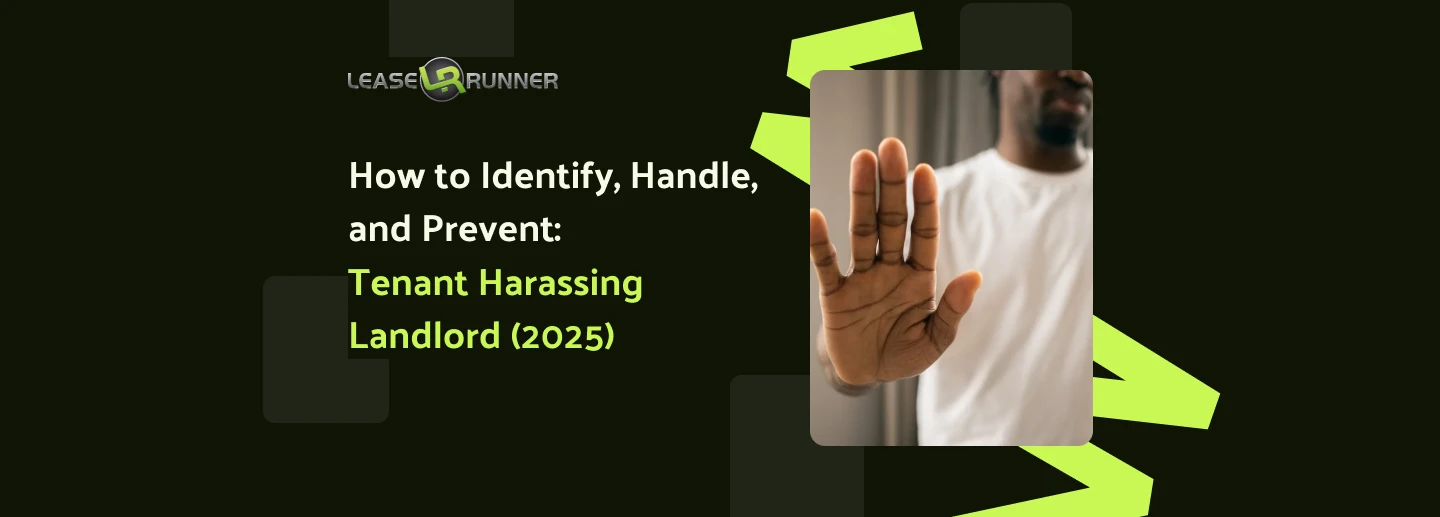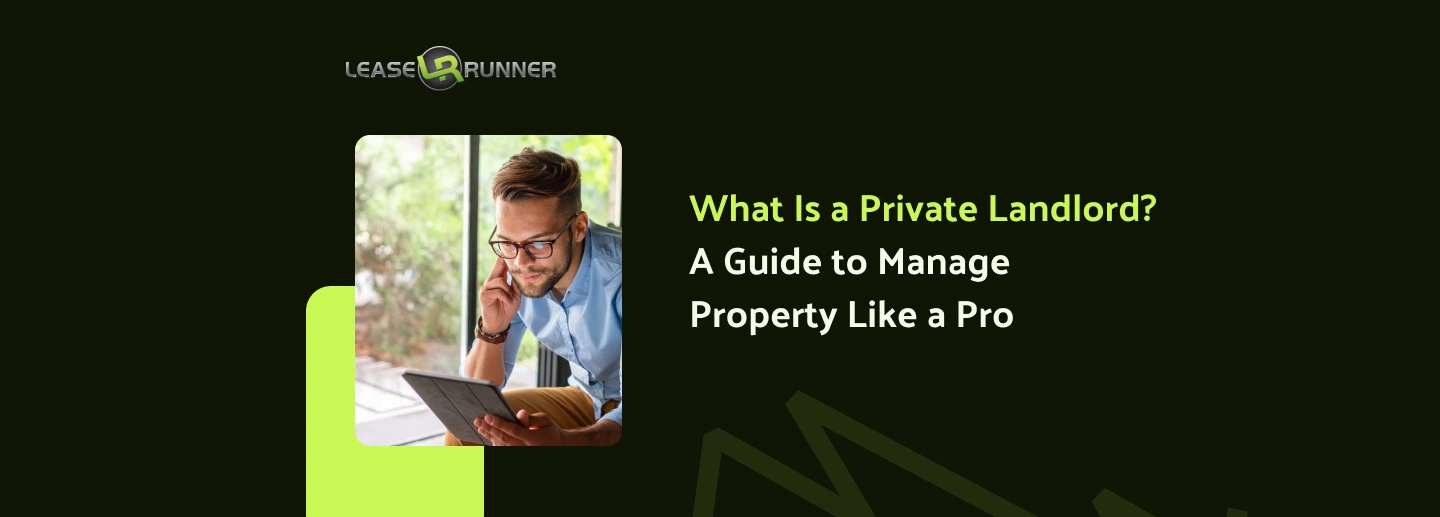Tenant harassing landlord is a challenge many property owners now face. Some tenants go too far by making threats, refusing to make repairs, or fabricating complaints. You could have to deal with a renter who threatens the safety of the landlord, yells insults, or calls at all hours.
Other ways that renters might harass landlords include destroying property, spreading stories online, or attempting to get other tenants to turn against you. If you know what tenant harassment is, you can act quickly. The regulations surrounding this are quite harsh in locations like California and New York City.
If you have these difficulties, maintain records, talk to your renters clearly, and know how to deal with tenants who are verbally abusive to keep your property safe and your mind at ease.

Quick Facts Table: Tenant Harassing Landlord
What Exactly Is Tenant Harassment?
A renter who harasses their landlord is not just someone who complains or seeks aid. Most landlords are ready for enquiries and requests. But there are times when a tenant's actions go too far and put others in real danger.
So, what does it mean to harass someone? It occurs when a tenant attempts to threaten, bully, or hurt the landlord in any way, whether emotionally, financially, or even violently.
Signs of Harassment Every Landlord Should Know
A tenant may send angry emails or texts at all hours, sometimes using harsh or insulting words. This isn't just rude, it can be a warning sign. Another example is a tenant threatening the landlord with lawsuits, violence, or calling the city to make false claims. If a tenant says, “I'll ruin your business if you don't do what I want,” that's harassment.
Online Attacks and False Complaints
Some tenants use the internet to attack landlords. They might post fake reviews or share private details on social media. This can hurt your reputation and make it hard to rent to others. Others might refuse to let you or a repair worker into the unit, then complain to city officials that you're not fixing things.
Group Harassment and Building Tension
Sometimes, harassment spreads to others. In cases of tenant harassment by another tenant, one tenant may encourage others to file complaints or start trouble. This can create a toxic environment in your building and make your job much harder.
Big City Challenges
In major cities like New York, tenant harassment of landlords sometimes leads to tenants making false complaints to housing authorities or organising rallies. These things are not just bothersome; they may also cost you time, money, and peace of mind.

Common Examples of Tenant Harassing Landlord
If you notice harassment early, you may avoid worse problems later on. Here are some instances of tenant behaviour that go beyond normal arguments and are annoying to the landlord:
- Verbal abuse or harassment actions, such as a tenant threatening the landlord with violence, litigation, or false complaints to the police.
- Sending hundreds of emails, messages, or calls, often in the middle of the night, with rude or threatening language.
- Filing false complaints with municipal inspectors or housing boards to get back at someone for saying no to a request or raising the rent.
- Making false statements about you or your property on social media or spreading false rumours about you.
- Not letting you or maintenance personnel in to make repairs, and then blaming you for not taking care of the property.
- Damage the property on purpose or tell other people to do so.
- Showing up at your home or business without warning, particularly in an aggressive style.
- Getting other tenants to join in on disruptive or unpleasant behaviour.
These tendencies should never be overlooked, even if every circumstance is different. It's vital to write down all you see when you see these indications and think about what to do next.
Real-Life Cases of Tenant Harassing Landlord and Consequences
Tenant harassment of the landlord is a real and growing problem. A lot of landlords have had to deal with threats, fake complaints, and even danger from their renters. Here are some examples using genuine data and sources.
Threats, Doxxing, and False Complaints: Real Examples
An internet post by a New York City landlord shared their experience. The renter was behind on rent by more than $100,000. When the landlord enquired about rent, the renter started issuing threats via text and email every day. Some of the communications contained threats of violence and insults.
The renter even gave the landlord's home address to other people and put it online. This is a clear example of a renter threatening their landlord. The same renter made a lot of fake complaints to municipal officials to put off being evicted. The landlord saved all of the messages and reports.
The landlord was allowed to call the police and go through with the eviction because of this documentation. The tenant's actions now make it impossible for them to rent again since their record stays with them.
Examples and Consequences
Examples of tenant harassing the landlord include:
- Sending threats or violent messages
- Refusing entry for repairs
- Damaging property for a purpose
- Filing false claims with city offices
- Using social media to attack the landlord's name
Sometimes, tenant harassment by another tenant happens, where one renter tries to get others involved.
The consequences of these actions are serious. Judges can grant restraining orders, order eviction, or make the tenant pay for damages. For example, in Oakland, a group of tenants won $450,000 after severe harassment, including death threats and property damage.
Tenants who harass landlords often end up on “do not rent” lists, making it hard to find new homes. For landlords, ignoring the problem can mean stress, lost money, or even danger. Experts and LeaseRunner advise acting early, keeping records, and using clear communication tools to protect your property and peace of mind.
Landlord's Legal Rights When Facing Tenant Harassment
Landlords are not powerless when a tenant's behavior becomes abusive. The law recognizes your right to a safe and respectful business environment. You have a few choices if you have a renter who is bothering their landlord:
- File a police report if you feel threatened, are being stalked, or if the tenant damages property. Police involvement creates a record and can deter further harassment.
- Seek a restraining order to legally prevent the tenant from contacting you or coming near your home or office. Courts in places with tricky landlord-tenant laws like California and NYC often grant these when there's clear evidence of threats or intimidation.
- Start eviction proceedings if the tenant's actions break the lease or violate local laws. Many leases include clauses against harassment or illegal activity, giving you grounds to act.
- Document everything, every call, email, text, and incident. Save copies of all communication and keep a log of in-person encounters. LeaseRunner's digital tools can help organize this evidence.
- Consult a landlord-tenant attorney in your area. Laws vary, and a local expert can guide you through the process, especially in complex cases like a tenant harassing a landlord in California or a tenant harassing a landlord in NYC.
Some states, like California, have specific statutes that allow landlords to seek damages or civil penalties for harassment.
In New York, landlords can use harassment as grounds for eviction and may even press criminal charges if threats or violence are involved. Taking action early not only protects you but also shows other tenants that harassment won't be tolerated.

How to Deal with Tenant Harassment Effectively: 7 Practical Tips
It might be hard to deal with a renter who is bothering their landlord, but you don't have to do it alone. Seven steps that experienced landlords and property managers say to follow are:
Stay Calm and Document Everything
When feelings are strong, it's easier to act right away. Instead, take a deep breath and start writing things down.
- Write down the date, time, and what was said or done in every contact.
- Keep all of your messages, emails, and voicemails.
- Take pictures or recordings of any damage to property.
If you need to call the police, your lawyer, or a court, this record will be very helpful.
Set Boundaries and Communicate Clearly
Professionalism goes a long way. Here are several things you should notice:
- Respond to the tenant's messages in writing, using calm, clear language.
- Reference the sample lease agreement template and outline your expectations.
- If the renter starts to yell at you, tell them that their behaviour is not acceptable and that you will write it down. Sometimes, setting limits early might end harassment before it becomes worse.
Know When to Disengage
Some renters love to fight. It's alright to cease talking to someone directly if you keep getting into fights or getting unpleasant texts. Tell the renter that you will only reply via proper means or through your lawyer. This action reduces escalation and protects you from further abuse.
Report Threats to Authorities
If a threatening landlord crosses the line, making threats of violence, stalking, or criminal damage, don't hesitate to call the police. Taking action right away may keep you safe and make a legal record that helps your case.
Seek Legal Advice
California or New York’s landlord-tenant legislation may be hard to understand, particularly in areas like California and New York, where the rules are quite tight.
If you need to go to court, a local lawyer can assist you in understanding your rights, write legal notifications, and represent you. A lot of lawyers will talk to landlords who are being harassed for free.
Alt: tenant-harassment-landlord-response-tips
Use Property Management Tools
LeaseRunner and other platforms make it easy to check out potential renters, keep track of conversations, and organise paperwork. When there are problems, property management software creates a digital trail that may be quite useful.
Using these technologies also indicates that you conduct your firm in a professional way, which judges prefer to appreciate.
Maintain Your Safety
Your health comes first. If you ever feel unsafe, avoid face-to-face meetings and consider changing your contact information. Don't hesitate to ask for police protection if you believe you're at risk. Share your concerns with friends, family, or colleagues so others know what's happening.
Tips To Prevent Harassment Before It Starts
It's always best to stop anything before it happens. Landlords can stop a lot of tenant harassment before it starts by being proactive.
- Make sure to check out your renters carefully. Before you sign a lease, do criminal background checks, check credit records, and ask for references to find any possible concerns. LeaseRunner's screening tools make this process easier.
- Set clear expectations in the lease. Explain what harassment is, how people should talk to each other, and what will happen if someone acts badly.
- Keep communication open and professional. Respond to queries right away and keep a record of all conversations. People who rent are less prone to become angry when they feel heard.
- Check on your property on a regular basis. With enough warning, check on your property to find problems early and demonstrate that you care about keeping it up.
- Teach your renters what they are responsible for. A welcome package or orientation might help create the correct tone.
- Use software to manage your property. Make sure nothing falls through the cracks by keeping documents and communication in one place.
- Keep up with the legislation in your area. The rules are shifting, particularly in locations like New York City and California. Knowing what you can and can't do gives you the confidence to act.
You can make sure that your landlord and renter relationship is courteous and professional by doing these things.
Handling Tenant Harassment from Other Tenants

There are occasions when the issue isn't between you and a renter, but with the tenants themselves. When one renter harasses another, it may make the place toxic and put you in the midst of fights. In that case, you can consider doing these actions:
- Take complaints seriously when you receive them.
- Talk to each side individually, hear what they have to say, and write it all down.
- Remind renters of their lease duties to respect neighbors and keep harmony. If harassment keeps happening, think about mediation or getting the police involved if there are threats or violence.
- In really bad circumstances, you may have to start the process of evicting the renter who is causing problems. You should include anti-harassment terms in your lease so that you have clear grounds for action if you need to.
Remember, your responsibility is to provide a safe environment for all tenants. Ignoring harassment can open you up to legal risk and damage your reputation as a landlord.
When Tenant Harassment Is Grounds for Eviction
Not every impolite interaction is enough to have you kicked off, but persistent or serious harassment usually is. You have the right to these things below if a renter harasses the landlord or another tenant and breaches the law or the agreement:
Start by writing down every time anything happens and what you do to fix it. Send written warnings that describe the behaviour and refer to the lease. If the harassment continues, follow your state's eviction process carefully. In places like California and New York City, courts often side with landlords who present clear evidence of harassment.
Police records might help your case if there are criminal activities involved, including threats or damage to property.
Eviction should be the last thing you do, but sometimes it's the only way to keep yourself, your property, and your other renters safe.
Bottom Line
Tenant harassing landlord is a serious issue that can disrupt your business, your property, and your peace of mind. Recognizing the warning signs, documenting every incident, and knowing your legal rights are essential for every landlord.
Whether you're facing a threatening tenant, dealing with tenant harassment by another tenant, or navigating complex laws in California or NYC, proactive management and professional support, like LeaseRunner's tools, can make all the difference.
Don't ignore harassment or hope it will go away. Take action early, protect your rights, and seek expert help when needed. Your property, your well-being, and your reputation are worth defending.
FAQs
Q1. What is considered harassment from a tenant?
Any repeated action by a tenant that bullies, threatens, or harms the landlord, like verbal abuse, threats, or property damage, counts as harassment.
Q2. What are some examples of a tenant harassing a landlord?
Examples include a tenant threatening the landlord with violence, sending abusive messages, filing false complaints, or intentionally damaging property.
Q3. How should landlords deal with verbally abusive tenants?
Stay calm, document every interaction, set boundaries, and communicate in writing. If abuse continues, seek legal help or consider eviction.
Q4. Can a landlord evict a tenant for harassment?
Yes. If the tenant's actions break the lease or the law, and you have documentation, eviction is possible.
Q5. How can I prevent tenant harassment?
Thorough screening, clear lease terms, regular communication, and using property management tools like LeaseRunner can help prevent issues before they start.







